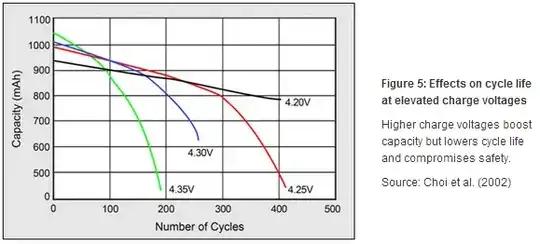In relation to Does recharging a battery when it is only half-way dead decrease its life span? I read an article about Maximizing the lifespan of a laptop battery where Samsung puts it:
Most battery damage occurs when the cells inside are at or near capacity. That’s because batteries get a bit hot under the collar when they max out their charge at 100 percent. This heat causes the delicate structures within to start to break down, which ultimately makes the battery less capable of holding a charge. Eventually capacity drops to the point where the battery won’t hold a charge at all and it has to be replaced.
They offer a solution which suggests to:
[...][cap] the charge at 80 percent.
To what extent is this true?
And although not directly related, I figure it must matter in this relation that electric cars are charged to 80% when performing quick charging.


